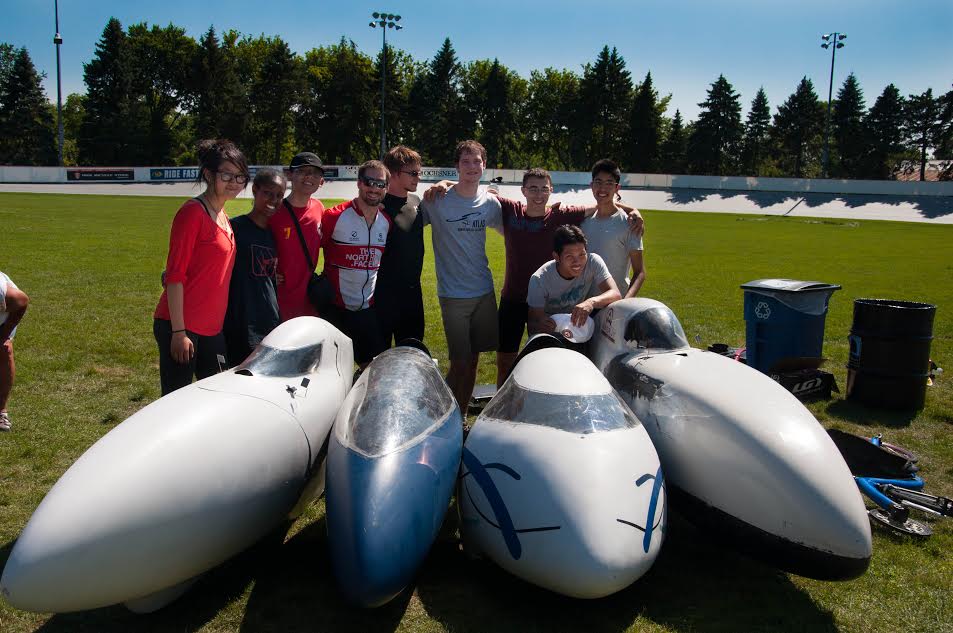AeroVelo, an aeronautics design team comprised of U of T students and graduates, has set their eyes on their next goal — to break the world record for the fastest human-powered vehicle. The bike is named Eta after the Greek symbol representing efficiency because Eta must be 100 times more efficient in its energy usage than the average car in order to break the world record of 133.8 kilometres per hour.
In 2010, AeroVelo created the world’s first human-powered flapping-wing aircraft — a dream stretching back to the time of Leonardo da Vinci. In 2013, they won a 33-year-old aviation challenge for creating a human-powered helicopter. Since 2008, they have competed to develop roadworthy human-powered vehicles, achieving higher speeds with each passing year. Their accomplishments provide them with a unique platform from which to launch their record-breaking bid.
The main objective in increasing the efficiency of any vehicle is to reduce the resistance it faces. In terms of vehicles, air resistance is the largest form of resistance faced. The most important effect the team had to eliminate was flow separation, which is created when the pressure at the back of the vehicle increases too quickly. By itself, flow separation can increase the drag faced by an object by over one order of magnitude. Airflow can be of two types: laminar flow and turbulent flow. In the case of laminar flow, the air flows in smooth layers over the surface of an object, whereas turbulent flow is characterized by an irregular flow of air. In almost all cases, turbulent flow results in a greater drag faced by the object.
Therefore, AeroVelo’s first step was to design a shape that would eliminate flow separation and result in the most laminar flow possible. They optimized an initial shape based on a desired pressure distribution using a shape optimization process created by a team member. First, an analytic formulation known as the Stratford-Smith criterion was used to determine what pressure gradient would cause the flow to separate. Next, to design for laminar layers, a decreasing pressure gradient was required. These two specifications, along with other components, such as the size of the wheel with the lowest rolling resistance, were accounted for to optimize the design.
Most human-powered vehicles stop their design specifications there, after achieving the minimal air resistance. In most bikes, because the shape is so suboptimal, it is very rare for forms of resistance other than friction due to the air and the road to make a significant difference. But for Eta, already efficient in those places, one more step was necessary — enhancing the efficiency of the drivetrain, the components that transmit energy to the wheels. This consisted of small but important changes such as introducing ceramic bearings and carbon-fibre spokes.
While the final alterations made to the drivetrain are non-transferable, the shape optimization process and the justification for the pressure profile distribution could be applied to more widely used vehicles such as cars. A tenfold improvement in the efficiency of cars could allow one to drive across Canada on only a few tanks of gas. This holds staggering implications for energy consumption and our carbon footprint.
To help realize their goal in time for the World Human-Powered Speed Challenge at Battle Mountain, Nevada in September, AeroVelo has created a Kickstarter campaign to raise $30,000 in funds by July 9, 2014.


